Hunter Douglas Duette Motorized Shades Review - Room With A PowerView
- Vast range of colors, fabrics, sizes and styles to choose from
- Motorization makes for maximum convenience
- PowerView Hub is flexible and has broad IoT integrations
- Insulation benefits could add up over time
- Custom shades aren't inexpensive
- No DIY option - pro-install only
- Occasional issues operating a shades group from remote
Smart lighting may be the easiest route into home automation, but nothing quite wows like motorized shades. Arguably the king of the category is Hunter Douglas, with a range of shades, blinds, rollers, shutters and more so wide, you'd be forgiven for feeling overwhelmed. If you've got an unusual window, though, that flexibility really pays off.
Here's the problem with my big windows
I live in a MCM house in the Midwest: that means big windows, which I love, but not a lot of privacy, which I'm less keen on. At night, in particular, the living room is basically an illuminated box and readily visible from the street.
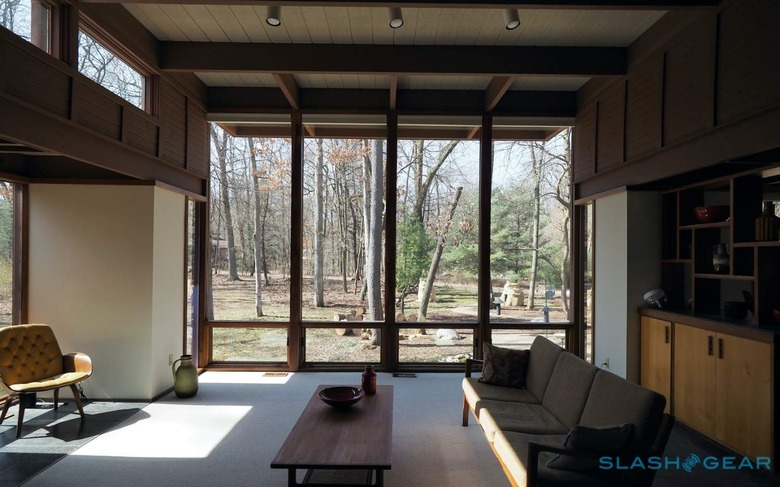
The goal, then, was to block some of the openness but without covering the whole window in the process. That's something top-down, bottom-up shades are particularly good for: there's a separate top rail which can be lowered independently, resulting in an obscuring bar along the bottom of the window but leaving the upper half clear.
You can get manual top-down, bottom-up shades, but I would've needed a ladder to reach that top rail every time I wanted to open them. Motorized versions are rarer, but they're available in Hunter Douglas' Duette range, as an alternative to the usual one-way honeycomb shades. They also work with the company's new power option – a rechargeable battery wand – and its PowerView hub for integration with various smart home platforms.
Controlling Hunter Douglas shades can be easy or flexibly complex
If you're going beyond manual cords, the easiest way to control the motorized shades is via remote control, with what Hunter Douglas calls its Pebble Remote. There's also a wall-mounted version and in fact both use the same circular controller, only slotted into either a remote casing or a wall bracket.
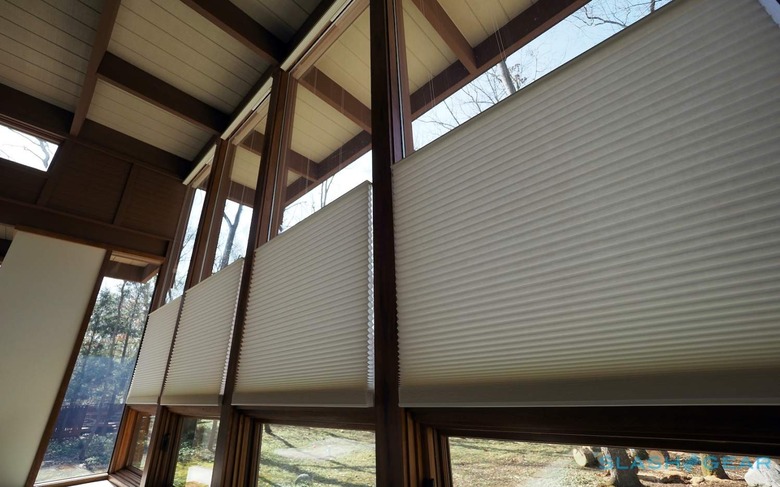
A single remote can control up to six individual shades – you can select which by tapping the numbered buttons around the edge, or hitting "all" – and store a single favorite position for each. The central button cluster opens and closes the shades with a stop button in-between. Either side of that are buttons that, for motorized top-down, bottom-up shades, adjust the position of the top rail: how much of the upper section is opened. If you have Hunter Douglas blinds that tilt instead, those buttons adjust the angle.
It's easy to use, with a motion sensor that lights up the buttons when you pick the remote up. Hunter Douglas offers a variety of different color housings, too, though the black one is subtle on the coffee table. Occasionally, I've found, hitting open or close doesn't trigger all of the blinds: three will move, but I have to press a second time to get the fourth to respond.
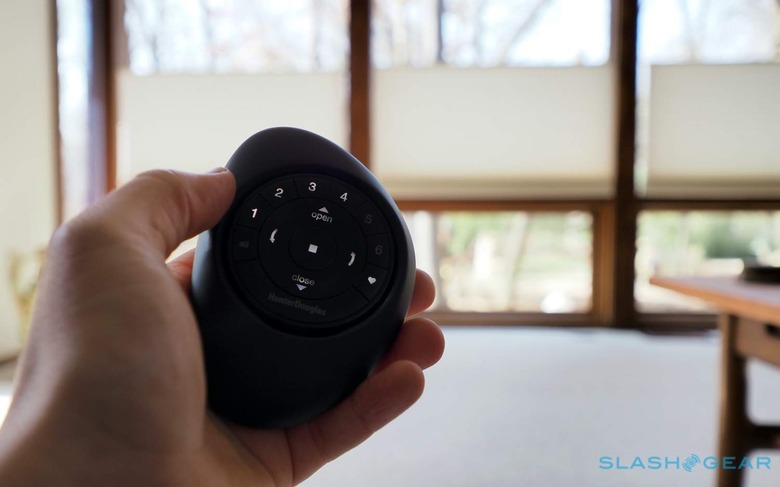
For more precise control, there's the PowerView Hub. That hooks up to your home router via WiFi or ethernet, and allows you to use the shades with the Hunter Douglas app or via voice command with smart speakers. If you've got a big house, with shades spread out, there are network extenders that plug into a spare outlet to make sure the signals reach.
The PowerView app is pretty comprehensive. You can organize shades by room, and then control individual shades or all in the room by dragging the position you want up and down on the screen. It supports scenes, too – I have "all open," "all closed," and "privacy" with a section at the bottom of the window covered – and you can pin those to the primary dashboard for easier access. Individual shade battery levels and signal strength are shown in the app, too, and if you have multiple homes you can switch between different hubs.
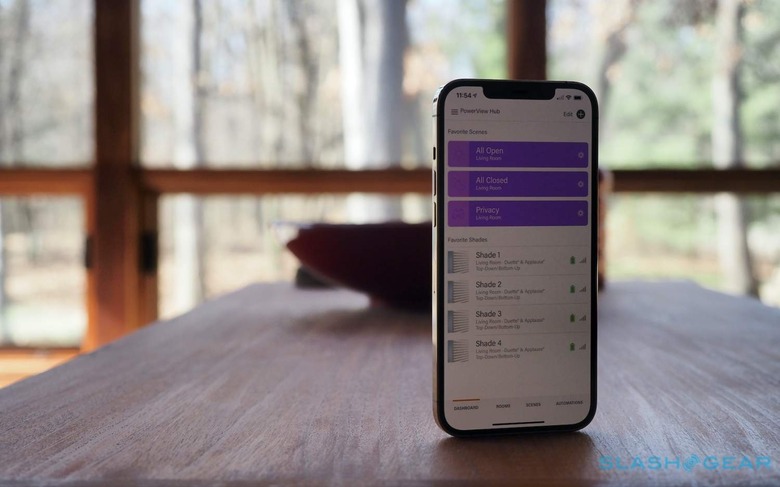
Automations, meanwhile, allow you to trigger scenes depending on what time it is. That can be a set time on certain days of the week, or based on sunrise or sunset (including an offset before or after that) to dynamically adjust depending on the time of year.
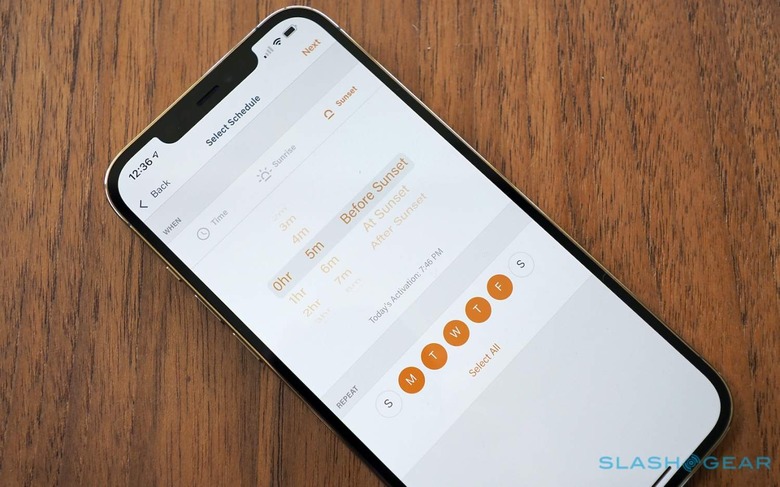
It's flexible, but you can go further with third-party smart home integrations. If you're got an Amazon Alexa, Google Assistant, or Apple Siri-powered smart speaker, you can link your PowerView account and control the shades by voice: "Alexa, turn on privacy in the living room," for instance, triggers my preset "privacy" scene. There's Apple HomeKit support, and you can choose certain scenes to show on Hunter Douglas' Apple Watch app. If you're an IFTTT user, you can link your shades there too, with a wide range of possibilities from closing them depending on the brightness of the day, to using geofencing so that they automatically open when you get home. Pro-install smart home platforms like Control4, Crestron, Elan, Savant, RTI, and URC and also supported.
No DIY necessary - or allowed
Hunter Douglas works with a network of thousands of dealers, some as small as one person, others part of nationwide smart home or furnishing specialists. Typically they're responsible for the whole process of coming out and doing an initial consultation, measuring up your windows, talking through the options, and guiding you through the vast – and I do mean vast – books of samples that show the different fabrics, colors, finishes, and sizes of the various shades. Some specialize in broader smart home work, meanwhile, or pick up where independent interior designers leave off.
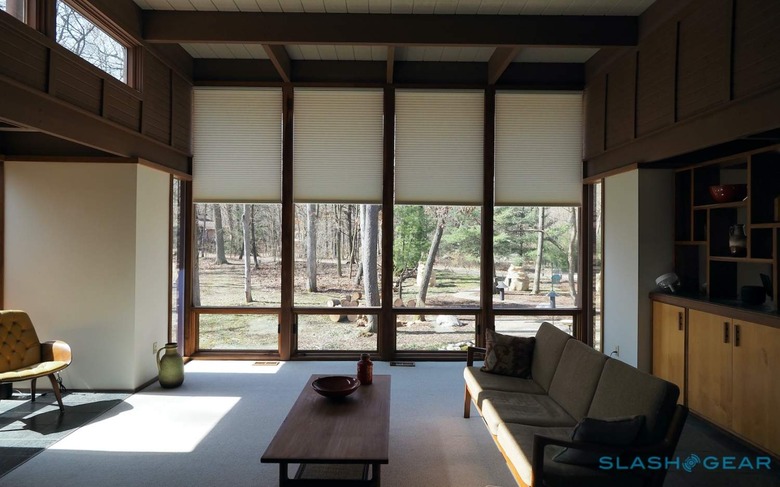
Given we're in the midst of a pandemic, I was curious to see how Hunter Douglas would handle a home visit. My installer – Mark Waite of Rockford Installations in Michigan – came suitably masked and ready for social distancing. We'd done much of the decision-making beforehand, with Hunter Douglas offering phone or video chat consultations to go through the options.
Since the shades are made to order, a little patience is required. It took about 6-8 weeks before the installer was due to come back and fit them, though that process itself was straightforward. A bracket screws into the top of the window frame, into which the shade itself clips. The battery wand slots magnetically into a cradle behind that. Then it's a case of programming the Pebble Remote and setting up the PowerView hub if you're adding that too.
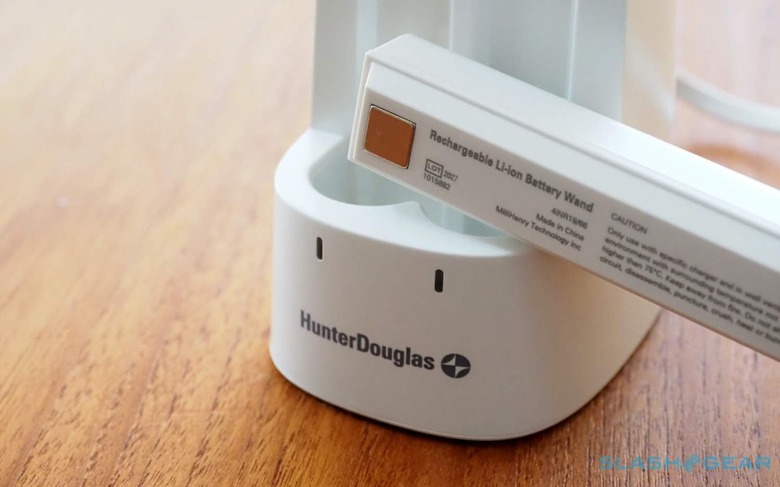
One thing worth noting with the new battery design is that the power wands mount behind the shades. That meant the shade itself was pushed forward in each window recess, since it needs to leave space for the battery to fit between the fabric and the glass. One of the benefits of having a pro-installer on hand was that we could look at alternative mounting options, such as running a short extension power cable above the window frames and mounting the batteries there, though eventually we decided that would look too messy.
You can, meanwhile, get mains-powered shades, though they're typically installed in a new-build or renovation so that the wiring can be hidden inside the walls. There's also the old type of power pack still available, which uses regular batteries, though the convenience of the rechargeable wands seems difficult to beat.
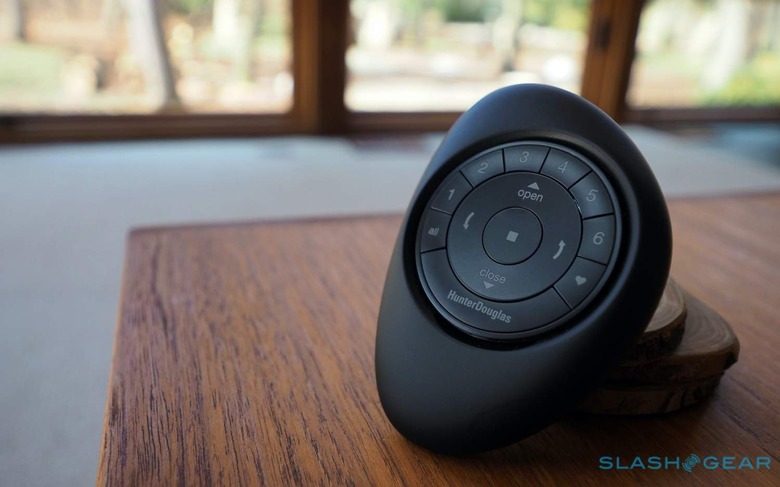
Hunter Douglas' expectation that a professional will be handling the installation and configuration means that some things can be a little tricky if you want to tweak them. If you want to change a shade's favorite position from the button on the Pebble Remote, for example, you can't just adjust them to the desired configuration and hold down the favorite button. Instead there's a system of button presses and releases that includes a small button on the shade itself, which involved me climbing up and down a ladder a few times.
In theory, your installer will get that organized for you from day one. More involved presets in the app are relatively easy to do yourself, so it's only really a frustration if you want to change a setting on the Pebble so that non-app-users have access to it.
Living with Hunter Douglas motorized shades
I'm a smart home geek; my partner, meanwhile, doesn't care about tech and would rather have as little to do with it as possible. Happily the Duette shades have proved a hit on both fronts. They're easy enough to use with the Pebble Remote that day to day operation is simple and convenient, while the smart home integrations offer a huge amount for me to play with.
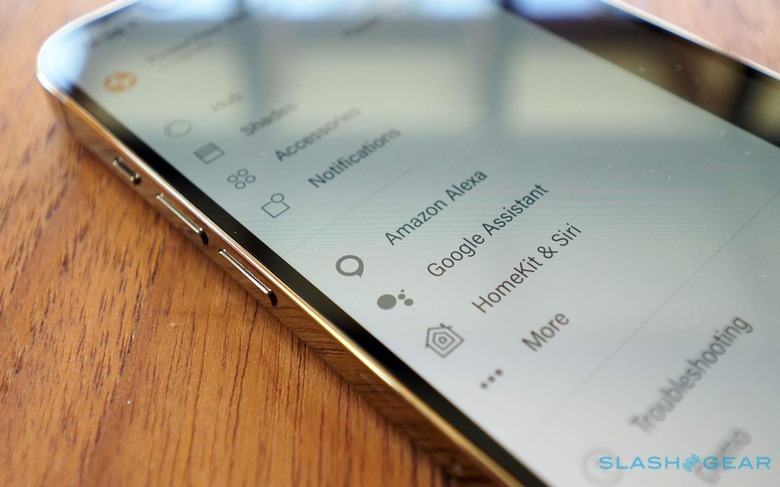
Hunter Douglas says it expects the battery wands to last about a year of typical use before they need a recharge. It's been about five months now, with at least daily opening/closing, and I've not seen the battery gauge in the PowerView app drop for any of the four. In use there's a quiet whir as they move: in a 35 db room, it rose to 40-42 dB when I was stood six feet away from one shade as it closed or opened.
As well as the privacy aspect, there's been a nice uptick in insulation too. Thanks to the Duette shades' honeycomb construction trapping air in-between, there's a noticeable improvement in heat versus the bare window alone. During the winter that's been 6 degrees Fahrenheit or more, which is considerable when you consider pretty much a whole wall of the room is glazed.
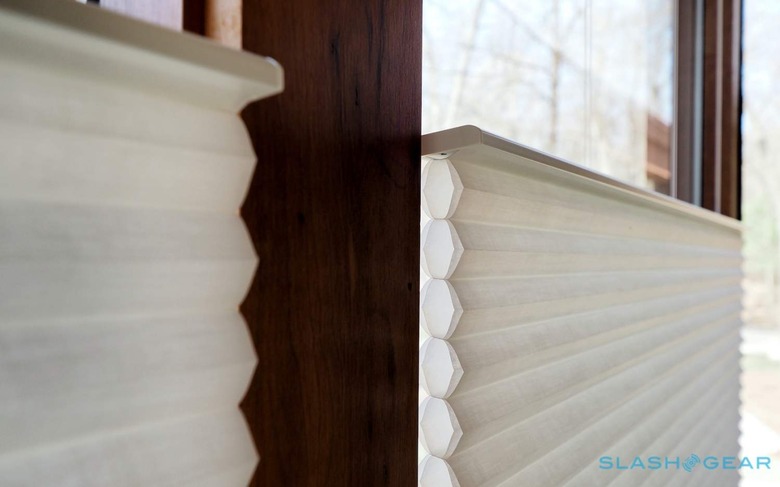
Though the shades fit within each window recess, there's still a gap along the edges so that they don't get caught. If you need absolute darkness, Hunter Douglas offers optional rails it calls LightLock, that install down the sides of the window frame. That might be worth considering in a bedroom.
In motorized shades, you get what you pay for
Custom shades aren't inexpensive. That goes doubly for custom motorized shades. Since Hunter Douglas doesn't sell direct to users, only via authorized dealers, it's not particularly easy to find an idea of pricing either.
As a rough guide, then, two of the Duette shades were 42.5 inches wide and 104.25 inches long, made of Architella Elan fabric with the 3/4-inch light filtering pleat. Each was priced at $1,521, including a rechargeable battery wand. The other two shades were slightly narrower, and each slightly cheaper.
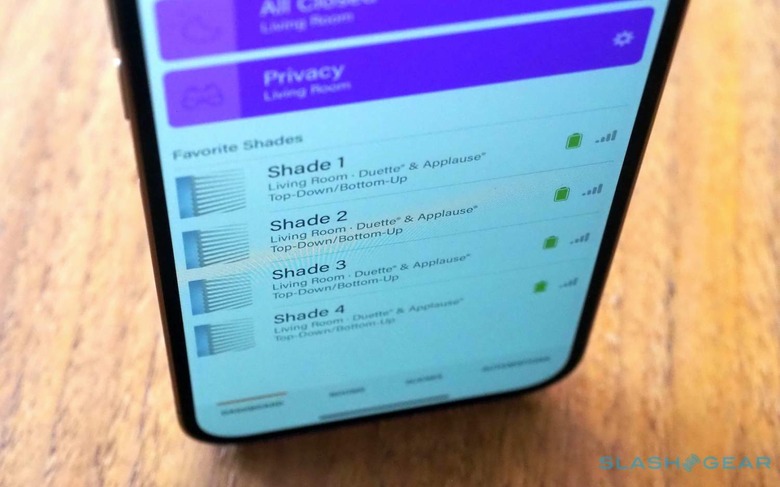
The PowerView Automation Hub is $285, and the Pebble Remote is $70. A dock for the battery wands – which can recharge two at a time – is $95, while spare batteries are $70 apiece.
If you have a fairly standard-sized window, and are willing to measure and install things yourself, there are several off-the-shelf motorized shades options out there. IKEA's Fyrtur are one example, though there are an increasing number of others, and they can be considerably cheaper than Hunter Douglas' shades. There are, of course, caveats.
Fabric choice is a big one: I've not been able to find any other shade supplier with the same array of fabric colors and types as Hunter Douglas offers. For off-the-shelf blinds, a handful of finishes is typical. That's fine if you don't mind white or cream, but not if you want to match a certain paint color or upholstery fabric.
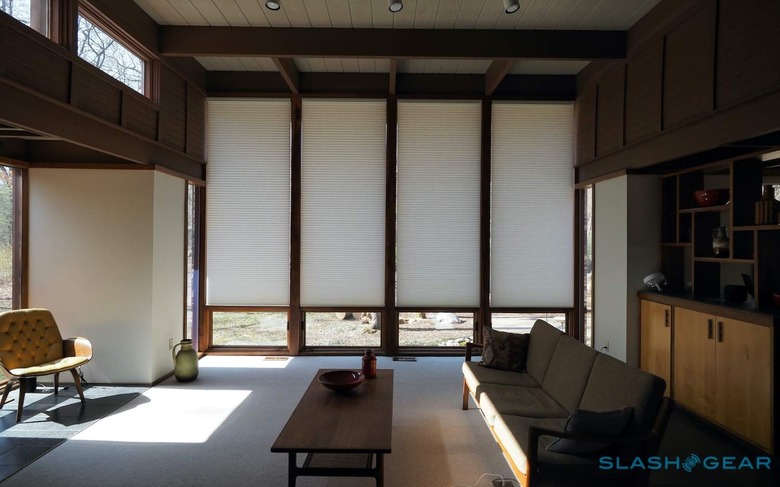
The other limitation is size and shape. Off-the-shelf motorized shades typically come in a few widths and lengths; you can adjust the latter, but it's tougher to accommodate a window that's wider or narrower than the standard sizing. Even among custom shades, though, Hunter Douglas' range just goes further.
For top-down, bottom-up motorized shades that fit my particular windows, for instance, Hunter Douglas is the only company that makes them. Others have similar shades but they're manually-operated; or, though they're motorized, they don't have sufficient drop. That's a situation you can't cross-shop your way around.
Hunter Douglas Duette PowerView Shades Verdict
It is, perhaps, a rite of new-homeowner passage when you discover just how much quality shades actually cost. On that front, Hunter Douglas is definitely in the premium end of the market, though I feel like you get what you pay for. Along with the (near-overwhelming) array of fabric colors and finishes, build quality seems high, and the motorization system works cleanly and consistently.
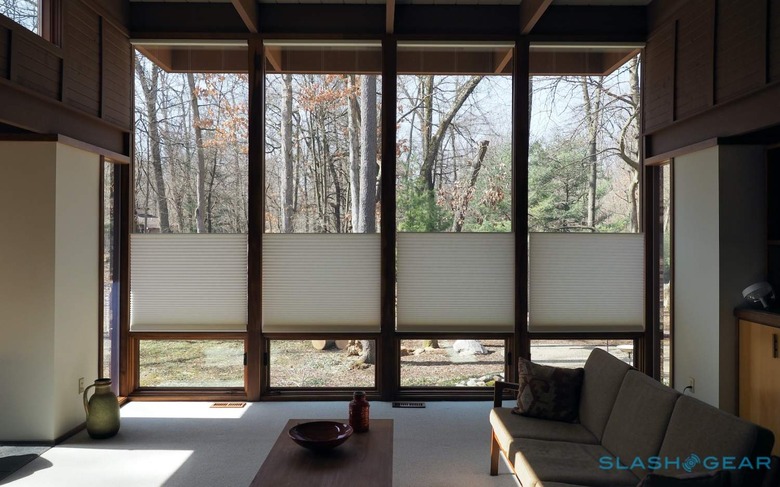
Meanwhile, the fact is that I wouldn't have been able to achieve this final result in any other way. The combination of top-down, bottom-up, motorized shade with rechargeable battery in a custom size to suit atypical windows is so far outside the remit of off-the-shelf blinds, there was just no route for me to go DIY. Though the cost is not-insignificant, it's also not outlandish for a home decor product with a lifetime warranty for the shades (bar normal wear and tear) and five years on the motorized components. Since PowerView integrates with other smart home platforms, you could feasibly mix-and-match with cheaper shade options on less unusual windows.
Best of all, though, is the feeling that we can use the space more freely, worrying less about who might be looking in, but without needing to block out natural light. Factor in the home automation potential and there's a whole lot here to like, but it's really how seamlessly Hunter Douglas' shades fit into daily life which sets them apart.
